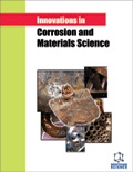Abstract
Metals and their alloys are widely utilized for engineering applications because of their enhanced strength and workability. When the metallic components are assembled to deliver the relative motion, the friction will be generated due to the interaction between the metallic surfaces, and this interaction will lead to the ‘Wear’ of the metallic components. Wear in mechanical components reduces the plant efficiency because of power losses, and in rare cases, it is catastrophic. Wear is a vital cause of malfunctioning a mechanical system, and it is a serious issue that needs to be addressed in tribological applications. In a mechanical system, the relative motion of a solid body/particles (or) fluid particles over other metallic surfaces results in fragmentation, plowing, cutting, shearing, scuffing, scoring, pitting, etc., and these features can be categorized based on the wear mechanisms. The important wear mechanisms in industrial situations are abrasion, adhesion, delamination, erosion, fatigue, fretting and oxidation. This chapter comprehensively reviews the various tribological issues in the metals and also some notable case studies.
Keywords: Abrasion, Adhesion, Alloys, Cutting, Delamination, Erosion, Fatigue, Fragmentation, Fretting, Friction, Mechanical Components, Mechanical System, Metals, Oxidation, Plowing, Pitting, Shearing, Scuffing, Scoring, Wear.






















